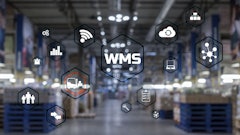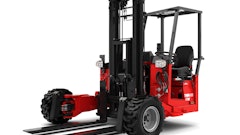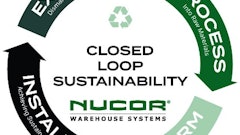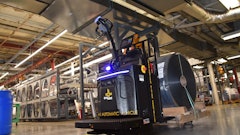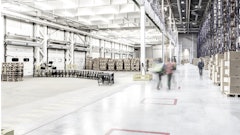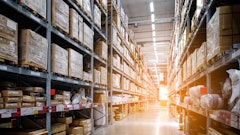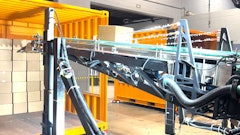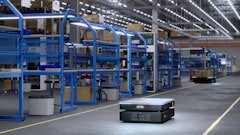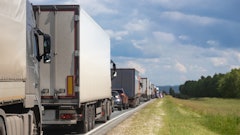
Valentine’s Day symbolizes a celebration of love to most people around the world. Add in Galentine’s and Malentine’s Days celebrating friendships, and it all adds up to a peak in retail gift sales – roses, chocolates, luxury items and special dining, or getaway offers. Total Valentine’s spending in 2023 was expected to reach $25.9 billion, according to NRF data.
But if there’s anything we’ve learned these last few years, things can go wrong, especially with the supply chain that delivers these highly demanded and desirable Valentine’s gifts. But Valentine’s staples – flowers, cosmetics and baked goods – can be risky business as they are sensitive to humidity and temperature while in transit to stores.
For example, the global rose supply chain relies on countries like Ecuador, Colombia, Kenya and the Netherlands that grow, harvest and ship roses across the world. Timing and temperature are everything. They must be picked and processed at just the right time and then maintained in a certain temperature and environment while being transported thousands of miles through the cold chain to arrive fresh, crisp and colorful for shoppers. Harvesters and logistics managers have a lot to think about when it comes to transporting flowers through the cold chain: cooling via vacuum and forced air methods, removing infected flowers and avoiding botrytis blight (a fungal disease) and damage from frost while in storage and transit to name a few. Exposure to the wrong environment could cause wasted inventory, lost revenue and negative consumer experiences. But how can suppliers, logistics and warehousing companies make sure their cold chain is the best it can be for Valentine’s Day and every day?
Cold Chain and Environmental Data Visibility
Supply chain managers need accurate, timely, high-level views of their inventory and supply chain with ‘air traffic control’ platforms that connect, analyze and leverage data across the chain. These platforms provide predictive insights and analytics for road, sea, air, rail and last-mile routing and allow transport and logistics teams to build custom solutions with APIs and leverage AI assistants for problem identification and solving.
For example, if a delayed arrival of an empty truck is reported, a loading dock manager can turn to their workforce management solution to reallocate labor. They may have four workers to help load or unload another temperature-sensitive shipment to minimize exposure to warmer (or colder) temperatures. In another scenario, the platform may be able to reconcile weather reports with anticipated transit routes to recommend a delayed departure. The shipment may be late, but it’s better to be late than throw away pallets of roses on arrival because they were temperature compromised.
At an operational level, environmental monitoring systems can use sensors in heating, ventilation, air conditioning and other systems to track that air, humidity, light and other conditions in cold storage. They monitor conditions across a space, giving managers visibility into what is happening. Meanwhile, environmental sensing systems monitor temperature, humidity, light and other conditions down to the item level and even after an item has left cold storage. This means sensing systems can travel with inventory like roses, monitoring conditions, location and time as they move and share that information during transit and upon arrival.
Sensors can range from simple chemical-based sensors to passive USB monitoring devices to more advanced Bluetooth-enabled ones. For example, the data captured via temperature sensors, location beacons and radio frequency identification (RFID) at the time the roses were unloaded from a trailer, put in inbound staging, released from staging and taken to cold storage can be aggregated and compared using prescriptive analytics. Should the temperature rise or drop at any point in time, managers can identify the trouble area and time frame to rectify the root issue and prevent a reoccurrence. They can also use the data to determine the potential impact of the temperature change on product quality. Recent advancements in data logger technologies leverage Bluetooth® and near field communication (NFC) connectivity. Cold chain managers can now see what's happening inside a box or crate without needing to open it, making it convenient to track temperature variations in near-real time.
Data from these wireless-enabled data loggers are typically sent to the cloud. The inventory or quality control manager can then sign into their private portal to view the data for an entire shipment. Modern data loggers come with a security layer that provides secure connections to block unauthorized access, prevent data manipulation and provide encrypted data transmissions to help defend against security breaches.
Delivering the Love for Valentine’s Day
Every rose has its thorn and right now, costs and delays continue to mount in the Panama Canal, and conflict in the Red Sea shows no sight of ceasing, as far as sea freight is concerned. While the wider industry faces labor challenges and a decline in air freight demand, transport and logistics companies and the retailers they serve are feeling yet more pressures. But recent data suggests warehousing and logistics leaders are heading in the right direction to make their operations a lot more visible, resilient and secure.
Sixty-seven percent of decision-makers plan to implement temperature monitoring sensors and smart labels, while 91% want to move to cloud-based systems for improved supply chain visibility. Whether an online order or shopping in store, it’s frustrating when items aren’t available, especially for special occasions like Valentine’s Day. Sensors and cloud platforms are helping to ensure the cold supply chain delivers the goods that spread the love.








